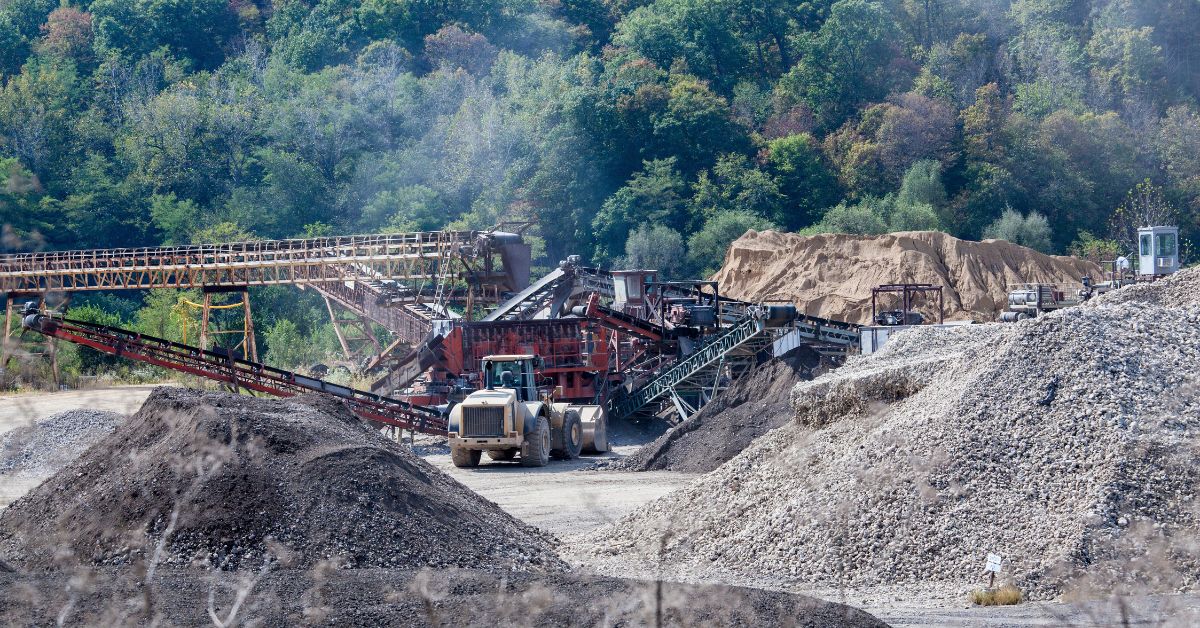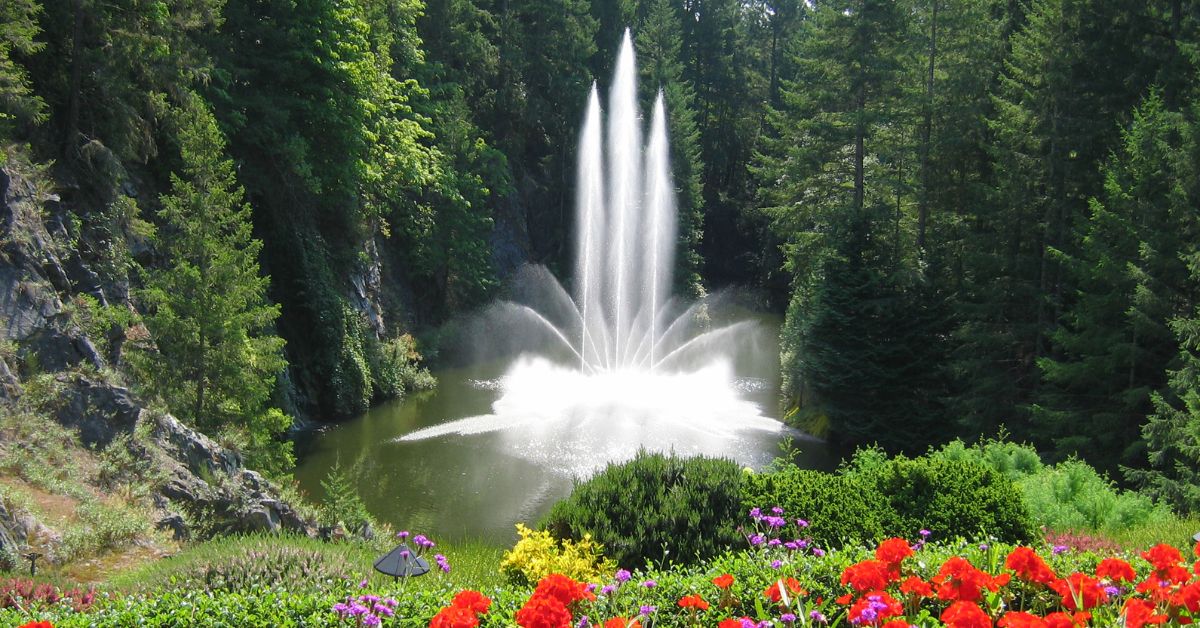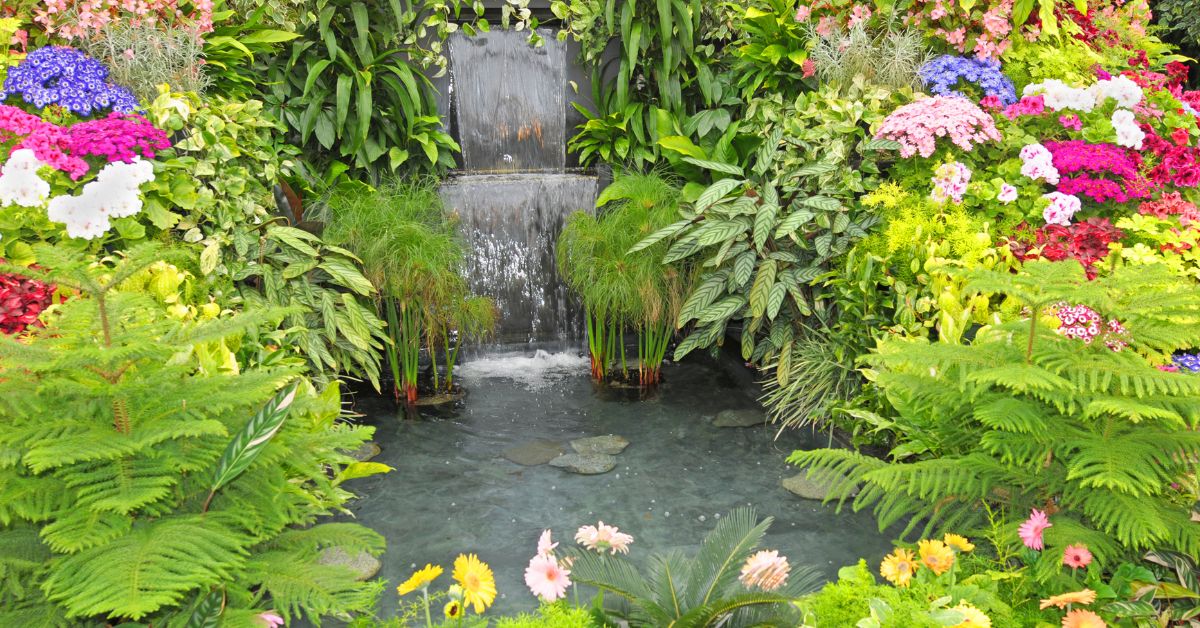Listen to this episode of the Focus with Marlene Podcast:
Get caught up with all episodes in the Developing a New Focus series.
A gravel pit is created when bulldozers and huge earth-scooping machinery remove the earth to extract gravel and other ingredients needed to build roads, make cement, and gather building rocks, etc.
After the earth is removed, what remains is a huge scarred and pitted hole in the ground with unstable and crumbling sides, water seepage from underground springs, stagnant pools of rainwater, discarded pieces of rock, and other unusable mounds of earth.

You’ll almost always find scattered debris, discarded by individuals who consider this a worthless piece of land; a place to throw away pop cans, beer bottles and candy wrappers.
What do you do with old gravel pits that have outlived their use?
Well, one lady who had the skeleton remains of a large gravel pit in her backyard decided she would find a way to turn it into something beautiful.
The Birth of Butchart Gardens
In the late 1800s, Robert Butchart began excavating limestone from a quarry behind the home where he and his wife, Jennie, lived. He used it to manufacture Portland cement in a factory he built at Todd Inlet on Vancouver Island. When all the limestone was extracted, all that remained was a huge, ugly, expansive hole in the ground.
But Jennie was not willing to let it lay there discarded, ugly, and debased. With the help of architects and landscapers, topsoil from neighboring farmland was brought in and a beautiful design created.
Paths were designed, ponds dug, trees and shrubs and hundreds of blooming plants planted. Leftover rocks were strategically placed in new locations, enhancing the gardens.

And so began the stunning reversal of desecrated land that today is known for its spectacular beauty.
What was once an ugly and desolate pit is now a beautiful sunken garden whose paths wind around serene ponds of water where ducks and swans float between lily pads and tree branches gently caress the water’s edge.
Artfully placed flowers, shrubs, and trees draw you into a world of beauty and a panoply of color. At night, thousands of strategically placed lights turn it into a fairyland.
The world-famous Butchart Gardens is visited by thousands of tourists from around the world every year. What was once an uninviting and inhospitable place has now been turned into a showcase. In fact, it is so spectacular that people come to see the exquisite beauty and splendor throughout the year, during every season.

While this is a nice success story, what has it got to do with us?
We can use this same analogy with our lives. Many people feel their lives have been torn up and left violated and sullied.
What remains are giant holes, unstable lifestyles, underground seepage of toxic messages, and huge boulders of doubt and shame that keep them blocked, unable to move forward with a perception that their life holds little worth or value.
Our Personal Gravel Pits
Everyone has elements of a gravel pit.
There may have been violence or abuse in our homes, tragic and lonely childhoods, or just careless living.
Within our gravel pits we find old losses that have not been grieved and messages from the past that continue to poison our self-esteem and worth. The walls of our heart resemble the scars from claws of the digger that scooped out our core values.
Pools of disasters, calamity, and catastrophe continue to leach into our hearts and rob us of joy. We build sturdy walls or fences around our pits so nobody can see our feelings of shame.
And we are left feeling desolate, abandoned, lost and lonely.
In our attempts to reconstruct the pieces of our lives, we often get overwhelmed so we give up and believe that life will always be an ugly gravel pit.
We don’t talk about our pits because we don’t want people to see our ugly side and reject us.
We run away or deny our past because it makes us feel repulsive and flawed.
But even while we try to distance ourselves from it, it continues to sneak up on us and impact everything we do.
When we identify and understand how events can leave us feeling scarred and flawed, we need to also understand it is not a place where we have to stay.
Turn Your Gravel Pit into a Beautiful Life Garden
Just as Mrs. Butchart took the gravel pit in her backyard and created a world-renowned garden, so we can take our lives full of pain, disillusionment and broken dreams and turn them into places of comfort and joy and beauty.

We can turn unattractive and hopeless situations into satisfying, productive and pleasing futures.
We don’t scrap it – we use it.
It becomes the backbone – the template for a new beautiful garden of hope, light, joy, energy and strength.
Where do we begin such a daunting project?
The same place Mrs. Butchart did. She didn’t cover up the hole; she used it as a springboard. If she had just filled the hole with dirt, it would not be the beautiful place it is today.
It takes a vision and a desire to examine our pits and remove rubble and contaminated waste.
It takes insight to see that what was once an unwanted rock or obstacle can now be turned into a piece of art.
It takes a vision, a blueprint, and a willingness to take that first baby step.
Turn your gravel pit into a beautiful garden. You can do it!

